
Digital scarcity through the Bitcoin network was a historic discovery, and those who figured out early that you should probably own a little bit, have been rewarded. The purchasing power of bitcoin has exploded from less than a penny to more than $50,000 in just over a decade. Is the ride over, or will bitcoin go up forever?
In this article, I’ll lay out four reasons why I think the price of bitcoin will continue to go up in the coming years and decades. When you understand what bitcoin does and what benefits you get from owning it, there are some clear paths to increased adoption, and therefore a higher future price.
Will bitcoin go up? Yeah, I think so.
Of course, between now and then, there could be a lot of turmoil in the price action. Bitcoin has experienced extended periods of 80% price drops, multiple times since its inception. You might buy some today and see your purchasing power plummet tomorrow! That’s why it’s important to see the long-term vision for Bitcoin. You don’t have to be a Shadowy Super Coder to use bitcoin, but the more you understand about it, the less chance you’ll panic sell during the next dip. Instead, you may become a buyer of last resort (explained below)!
If you want to buy bitcoin just to make some money, that’s cool. Everyone brings something to the table, and you don’t need permission to buy or sell bitcoin. You don’t have to take the orange pill to benefit from bitcoin ownership. That being said, I hope you stick around, read some articles, and learn a bit about why so many people are moving to a bitcoin standard.
I came to get rich, but I stayed for the revolution
Bitcoin Proverb
4 Reasons Bitcoin Will Go Up
1. Limited Supply + Increased Demand = Number Go Up
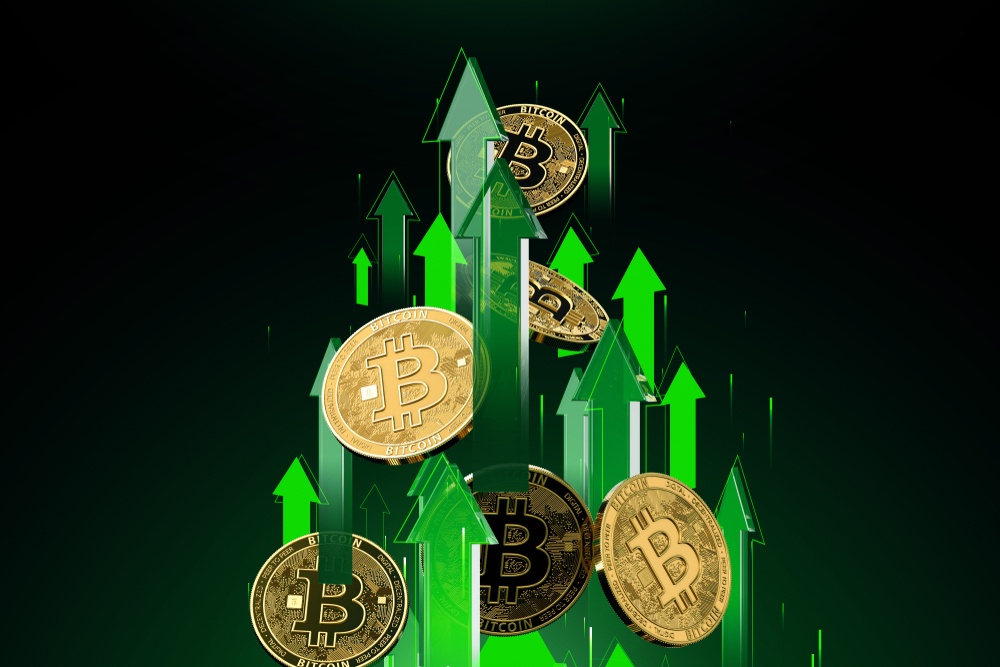
Instead of the supply changing to keep the value the same, the supply is predetermined and the value changes. As the number of users grows, the value per coin increases. It has the potential for a positive feedback loop; as users increase, the value goes up, which could attract more users to take advantage of the increasing value.
Satoshi Nakamoto
I think the easiest way to understand that bitcoin’s price will naturally go up over time is that there is a fixed supply of bitcoin, but an infinite demand for it.
The fixed supply is written into the code. The consensus that there should only ever be 21 million bitcoin can never be changed without overwhelming support from the majority of network participants, and there’s no reason anyone would vote to devalue their own wealth. It’s just not going to happen. There will only ever be 21 million bitcoin, and when you consider Satoshi’s stash, plus lost coins, the amount of bitcoin actually available is somewhere between 16 million and 18 million.
Infinite Demand For Bitcoin
Regarding infinite demand, I look at it from two perspectives, both of which show that there will always be an infinite demand for any money.
The first idea is that nobody ever has “enough” money. Given the opportunity, any rational person would always want to increase their wealth. Some people may make tradeoffs where they refuse work to increase their quality of life, but with a beneficial enough tradeoff, everyone would want the greater security that comes with owning more wealth.
Owning money is not the same as owning lumber or ribeyes. There’s a limit to how much lumber I could realistically make use of on my property before it becomes cumbersome and prohibitively expensive to store. There’s a limit to how much ribeye I can eat before it starts going bad. Good money should be durable and dense, therefore, demand for money is unlimited.
The second idea is the global population is always increasing, so there will always be a demand for money from new participants in the economy. As young people become adults, they will start to create value for society, and in return, expect compensation. Bitcoin from the older generations may be lost, or saved and passed down to the next generation, but young workers will still need to get paid money for the work they do. Society as a whole will demand more money.
Fixed supply + increasing demand = Number. Go. Up.
This is looking at demand on a long-term time horizon though and assuming that bitcoin has already reached mass adoption. In terms of global bitcoin adoption at this moment, we are still really early. Just 1-2% of the global population own bitcoin. What does the price of bitcoin look like when that adoption rate goes to 10% or 50%?
Cutting The Supply New Bitcoin Every 4 Years
Even though bitcoin is still being issued through the block subsidy at a rate of 6.25 bitcoin per block, the rate of issuance will decrease every four years with the halving. Assuming no new participants, and constant demand from current bitcoiners, you can see how a flat rate of demand with decreasing supply of new bitcoins could also lead to price increases over time.
Here are two interesting threads on the effect of the halving on price.
Can we really assume that bitcoin demand will remain constant? I think so.
During each cycle of price euphoria, new participants enter the market. Though the bubble may “pop”, as in 2011, 2013, and 2017, a new cohort of bitcoiners is born. You may hear people talk of their bitcoin experience as graduation classes. For example, I would be class of 2017, since that’s when I entered the market. The bubble popped in 2018, and then I held on through the Crypto Winter of 2018-2020.
New Bitcoiners Born Every Day
Many others share this same story, and we are witnessing the formation of a brand new Class of 2021 cohort as we speak. In fact, many new bitcoiners are zoomers, who were barely out of diapers when bitcoin was invented. They’ve grown up with bitcoin and trust it as digital money. Imagine how kids being born today might think of bitcoin in 20 years when they move into the workforce!
When people begin to understand this, they will also start to expect the price of bitcoin to go up in the future. That is the beauty of NgU Technology. Expectation of number go up, creates demand, resulting in an increased price, and then expectation turns into reality.
Related Content
2. Each Cycle Adds New HODLers & Buyers of Last Resort
Not everyone has to be a full-on Bitcoin maximalist to get value out of using bitcoin, but bitcoin ideas just click with some people. They go all in mentally, and maybe even financially. These people are HODLers of last resort.
These are the people who will never sell, for any reason. They understand Bitcoin. They are not leveraged or over extended, and they can survive a long winter. They didn’t sell in 2014 when the price dropped from $1,000 to $200. They didn’t sell back in 2019 with the flash crash to $3,000. Why the hell would they sell when it dips to $29,000?
Combine that with the buyers of last resort.
These are the folks who will buy bitcoin no matter what. These are the people who are using or buying bitcoin by default, and don’t worry too much about the exact price. They buy no matter what. These could be people on an auto-DCA plan at their exchange or they could be getting paid in bitcoin. Sending remittances home at regular intervals could be another example.
They are familiar with the pumps and dips in bitcoin. They’ve been buying and transacting for years, and they realize that it doesn’t matter much if they buy at $50k or $45k, because they’ll still be buying at $25k or $75k. The exact dollar amount of bitcoin the exchange isn’t at the forefront of their mind. Bitcoin is an accumulation game, so if they have more bitcoin at the end of the month, they have achieved their goal.
These people are fully orange-pilled.
With every cycle, more individuals become HODLers & buyers of last resort, setting a kind of price floor which continually gets higher and higher.
In addition to this higher price floor, I think there’s a case to be made that the floor gets more robust as well.
Bitcoin Education Is Getting Better
Bitcoin education is incredible now. It really hit its stride in 2019-2020. There are now hundreds of thousands of hours of bitcoin podcasts covering every topic imaginable from top minds in the space. There are hundreds of blogs about bitcoin on topics like the technical nature of how bitcoin works and how to code bitcoin, to more philosophical questions about bitcoin like why society should use a deflationary money system or how central banking corrupts the global language of money.
If you want to learn about bitcoin, it’s free and easy. It’s not the wild west anymore. The trails have been blazed, and now it’s safe for the settlers.
My own journey into Bitcoin is a great example to look at.
I’m by no means an extraordinarily smart person. I’m not a unique thinker or philosopher. I’m not an entrepreneur. I don’t have any expertise in politics, history, or sociology. I don’t say that to disparage myself, I just mean that it’s unlikely I would have discovered bitcoin and started thinking about the long-term societal implications on my own. Everything I know, I learned from someone else.
Everyone Buys Bitcoin At The Price They Deserve
If I had bought bitcoin early in 2011 or 2013, and didn’t have the support of incredible podcasters and authors like I have today, I probably would have sold after a 50% dip. I definitely would have sold after a 300% gain! Had I sold during the pump of 2013 or the crash of 2014 and subsequent bear market, maybe I would have never bought back in. Maybe I would have some negative emotions about missing the rally to $20,000.
Who knows how it might have played out? The point is that I came in at exactly the right time for me, and the education and support available were exactly what I needed to stick around. Now I’m orange-pilled. I’m a HODLer of last resort. I’m a buyer of last resort. I wasn’t around in the 2012 bear market. I wasn’t around in the 2015 bear market. I was here for the 2018 bear market, and I’m now better mentally equipped for the next one!
As education continually gets better and more accessible, more individuals will start to buy bitcoin. Although some will just be normies willing to jump ship at a 20% dip, a portion of those folks will join the HODLers, and our clan will increase yet again!
3. It’s Like The Internet In The 90’s
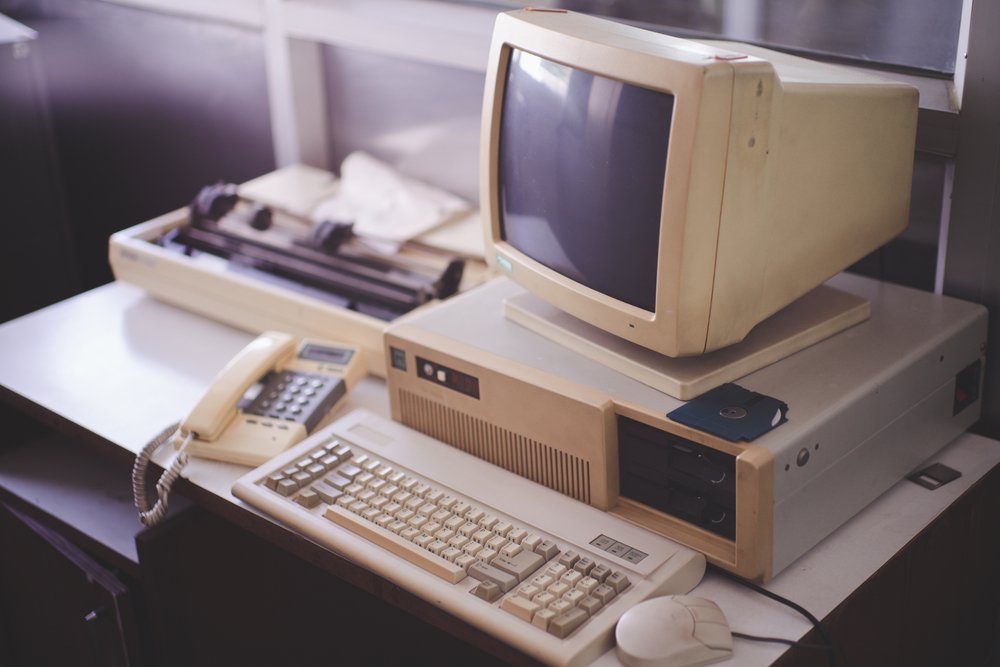
A large portion of the population doesn’t use bitcoin because it’s a new thing, and they are afraid of losing money. It’s hard to wrap your mind around the concept of what is money if you’ve never thought about it before. This is temporary.
Bitcoin is gaining users rapidly, including people who buy bitcoin as an investment and those who use it for daily financial transactions. Adoption is occurring right before our eyes. It’s still a niche thing, but it will become more mainstream as it becomes easier to use over time. It’s kind of like the internet in the 1990s.
In the ’90s, our family had a “family computer” in my parents’ bedroom. I had to ask permission to use it, as long as my dad wasn’t looking up stock prices. My mom never used it. I remember the whir and buzz of dial-up, and the echo of “You’ve got mail!” I looked forward to going to staples to pick up printer paper because I could look at the new video games like Mechwarrior and Tomb Raider.
There was no way my parents would ever buy anything online. It was dangerous to put your credit card details online!
Looking back, the experience of using the internet was horrible. It was slow and unreliable, and there wasn’t a lot to do. Compare that to the 2020s, where I have a constant stream of Amazon packages arriving at my door and my entire business depends on the internet. I get news about global events 5 minutes after they happen via Twitter. The internet is fully integrated in my life, and it only took 30 years.
Is Bitcoin As Fun As The Internet?
It’s hard to say exactly how close the parallel between Bitcoin and the internet will track. After all, the internet has cool shit like video games, porn, and memes. Maybe “new money” is just too boring, or maybe getting rich will ultimately be a bigger magnet to adoption than anything else. Hard to say.
My prediction is that people will start to use bitcoin because either 1) they have no other choice, 2) it provides a better experience than the legacy financial system, or 3) they just follow the crowd when it becomes convenient.
For option 1, those would be the folks without banks. They either don’t have enough money to qualify for a bank account or live in places where banks simply don’t exist. If you only have a few hundred dollars to your name and live 4 hours from the nearest branch, it doesn’t make sense to have a bank account. With Bitcoin, however, all you need is a mobile phone with cell reception or satellite access, and you can become your own bank. There’s no cost to join the Bitcoin network, no eligibility requirements, and no minimum deposit.
People living in countries with shitty money like Turkey, Lebanon, Argentina, Venezuela, and others, would also fit here.
For option 2, be on the lookout for Bitcoin’s killer apps. These are going to be bitcoin-native services that actually do a better job of serving customers than the legacy financial system. Some contenders could be:
- unstoppable peer-to-peer payments for creators
- 24/7/365 trading
- removal of social media or email spam through micropayments
- smart contracts
For #3, and possibly the most likely scenario, is that people don’t really care about either #1 or #2 because they are boring and take too much work to understand. If we expect bitcoin adoption for investing i.e. wealth preservation, what does the wealth preservation landscape look like right now?
Most people who are savers are investors by default, because it’s the thing to do. Everyone knows it dumb to have tons of cash in the bank because you’ll lose value thank to inflation. You need to invest!
The problem is nobody knows how to invest. Nobody knows what a 401(k) really is. Nobody puts too much thought into their IRA portfolio construction. 90% of US investors just buys US stocks index funds and call it today.
So the most likely scenario in my opinion, is that early bitcoin investors start doing well, their friends, family, and social media followers start trying to emulate their success. Pretty soon, bitcoin as a 1% allocation is standard advice. Then 10%. Then 25%. And so on. It may never reach something like 50% of an investment portfolio in our lifetimes, but if every investor in the developing world put 10% of their retirement savings into bitcoin, the price would go up for sure. Way up.
The Internet Was Hard. Bitcoin Is Still Hard Today.
Right now, there are still plenty of things that are hard to do with bitcoin. For example, I still don’t have my lightning channels set up properly, and I’ve tried a few times. These things are set to improve, however, and there are really smart people working on ways to abstract away these pain points for new users.
What’s really cool about the Bitcoin ecosystem in my opinion is that it’s really fragmented at this point. Someone could be deep into working on creating lightning payments for email addresses, while another person could be figuring out how to make the cheapest hardware wallet possible. This division of labor and specialization is going to accelerate bitcoin’s growth in the future.
Although the internet bubble eventually popped in 2000, the internet didn’t just die and go away. Great companies like Amazon and Google kept building. New companies learned from the mistakes of their predecessors and rode the next wave of adoption. The internet and the companies built on top of it persisted because they provided real world value.
Because Bitcoin also provides real world value, I also expect it to increase in adoption, and thus price, over time.
4. Bitcoin Solves Real Problems
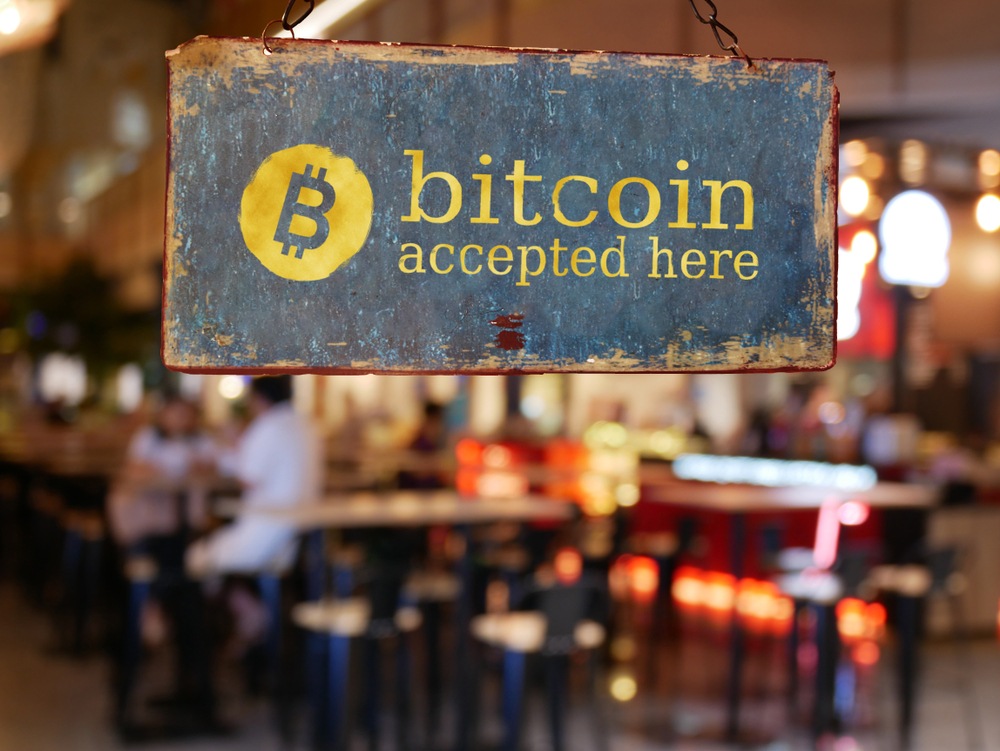
Bitcoin is here and it works. This is not vaporware, promising to do something in some future, undefined date. It already had its “zero to one” moment, and now the goal is to make it better. Because bitcoin solves a defined group of problems, it means there’s already a core base of users from which companies can get feedback and then use that feedback to improve their services.
Think about how hard it was to get digital music 30 years ago. It took maybe an hour to download a single illegal MP3. Demand for digital music was so high, that eventually various types of ecosystems developed to the point where now, with Apple Music, I have unlimited, streaming access to every single song ever created. That happened in about a decade, and I think we’ll see something similar with bitcoin applications.
Here are some of the CURRENT use cases I see for bitcoin and the problems they solve. As the solutions get easier to use, adoption and thus demand for bitcoin will grow. Since it’s not possible to increase the total supply of bitcoin, increased adoption should make the price go higher than it is today.
Direct Streaming Micropayments For Creators
The creator economy is new and huge. 75% of children want to become YouTubers. Spotify paid Joe Rogan $100 million for exclusive publishing of his podcast. Patreon and Teachable are sources of monthly income for families. However, in the middle of every one of those transactions is a platform. Running those platforms costs money, and a portion of your earnings is going to development, salaries, and maybe even shareholders.
Being able to get paid directly, on open source platforms cuts out the middlemen, meaning you get paid more, and your patrons pay less. The direct, value for value model, with the ability to stream micropayments, also means you don’t have to pay bulk subscription prices. Personally, I’d rather pay $0.01 per minute to listen to a single Joe Rogan episode than buy a Spotify subscription. I love sci-fi movies, but won’t pay for the Syfy channel because I have to bundle it with cable TV.
If instead, I had the option to just pay per minute of TV streamed, I’d absolutely pay for individual movies and shows. It reminds me a lot of how you used to have to buy a whole CD when you really just wanted that one single song. With streaming music, problem solved! Hopefully, we’ll see other types of streaming content follow suit in the future, and they could be built on bitcoin.
It’s a very cool thing to be able to pay creators directly with Bitcoin rather than having to go through an intermediary.
Permissionless Global Money
It’s a strange thing to learn that you don’t actually control your own money online. When you do an in-person transaction, there’s nobody that can stop you from taking a paper dollar of cash and handing it to another person. When you transact online, you are doing so with the permission of your bank, Visa, or PayPal. They’re allowing you to spend your money. That’s because what you’re spending is not real money – it’s an IOU. Cash is settled behind the scenes.
Being able to send real value online, without permission, is one of the core breakthroughs bitcoin achieved.
In Western countries, we don’t have to worry about it that much, but in many other places around the world, they don’t enjoy the same freedoms. Their local governments may create laws and regulations that restrict what citizens can buy online. This may be for religious reasons, such as in countries in the Middle East, or for ideological reasons, such as in China.
Even in the West, some people just don’t like the idea of asking permission to spend your own money.
Whatever the reason, there’s a market for permissionless, digital money, and that’s exactly what became possible with Bitcoin.
Banking The Unbanked With Mobile Devices
One cool concept I came across this year is the idea of skipping a generation of technology. The best example of this is that in Africa, many places never built out the infrastructure for landline telephones, so they just skipped it and went straight to smartphones once the technology became cheap enough. We are seeing the same thing with banking.
Many rural places around the world simply are not economically attractive enough, and their countries aren’t wealthy enough to build out financial infrastructure. It’s not uncommon to need to travel for half a day to get to your closest bank, if you have a bank account at all. With Bitcoin, you can skip all that, and be your own bank.
All you need is a refurbished Android phone and you can participate in the strongest, most secure financial network in the world. Suddenly, the smartest minds of our generation are developing your banking app, at no cost to you, and if they stop treating you right, the cost to switch is also zero.
Bringing banking and financial services to people who were previously not able to participate in the global economy is one of the strongest use cases for Bitcoin.
Easy Remittances
Remittances is another home run for Bitcoin.
For many families in developing countries, a large portion of their income comes from family members working overseas. However, it’s a pretty roundabout way to get that money in their pocket back home, and a lot of value is lost in the process. Families receiving remittances are forced to travel many hours to the closest Western Union, pay hefty fees on top of currency conversion fees, and then trek home with large amounts of cash in their pocket. It’s not easy.
With Bitcoin, you can send bitcoin directly to their smartphone, anywhere in the world, and they can access the money in minutes. They can use the money directly at stores that accept bitcoin or exchange it for cash.
They can go to any Bitcoin ATM (much easier to install than a Wester Union!) and withdraw local cash currency. If bitcoin ATMs are not available, services like Strike allow senders to send one currency like USD and receive a different local currency on the other end. The currency conversion is done on the back end, using Bitcoin payment rails, even though neither partner ever actually touches bitcoin in the process.
They can then use any local ATM to withdraw money.
Number Go Up Technology
You may hear people in the bitcoin space joke about Number Go Up Technology. This is a distillation in meme format of something Satoshi alluded to in his early writings. It’s the idea that more people using bitcoin leads to a higher price, which then attracts new entrants, thus driving the price higher, and repeating this cycle over and over again in a positive feedback loop.
Satoshi said this before bitcoin was worth even a penny, and it seems to be playing out this way. This is why when people talk about price, they talk about bull and bear cycles. We hit a bull market, blow off top, then price drop, bear market, then rinse and repeat. Each new bull market brings new players, and the bitcoin ecosystem expands. The next blow off top and subsequent bottom of the market is higher than each previous cycle.
Is Adoption Driving Price, Or Is Price Driving Adoption?
Though many people say that adoption is what’s driving the price, i.e. more people using bitcoin leads to a higher price, some people say it’s the opposite! They say it’s the price that ultimately matters, and the price is what drives adoption.
A great example of this is that certain types of hedge funds legally cannot invest in assets that have too small of a market cap. Another example is Apple, which could use all their cash and buy almost the entire Bitcoin network. They are not participating in Bitcoin right now because even at a trillion dollar market cap, it’s just too small to be on their radar.
However, as the network continues to grow, these larger players will start to dip their toes in.
You may be holding off on buying bitcoin right now because it sounds too risky, but what if the Bitcoin price hits $1,000,000 and Apple buys $500 billion worth of the asset to keep on the books? You would probably feel safe keeping your bitcoin in your Apple wallet, right? Suddenly, you become a market participant as well.
Whether adoption drives price or price drives adoption, remember that there’s no way to increase the production rate or total amount of the bitcoin supply. This is the cycle of Number Go Up Technology. This is how we get mass adoption.
What Makes Bitcoin Go Up?
It’s really hard to say exactly what makes bitcoin go up, though there are plenty of opinions. Some say the only thing that matters is increased adoption. Others take a more technical approach, looking at on chain metrics like liquid vs illiquid supply of coins on bitcoin exchanges. When you see a massive bitcoin price move to the upside, usually what is happening is shorts getting liquidated.
What that means is that a large group of traders made bets that the price of bitcoin would go down, but instead it went up. The further the price goes up, the more money they lose, so they start to have to buy bitcoin in order to cover their losses. This is a self-perpetuating cycle which can cause more shorts to get liquidated, causing more buys, and so on.
This effect can work in either direction, so you’ll see the same type of action when the price of bitcoin tanks fast.
In general, the price of bitcoin goes up because more people want it. Supply and demand. With limited supply and unlimited demand, the price will go up. This happens on a long time scale though. If you bought the high in 2017 of $20,000, you had to wait 3 years until the price recovered!
When Will Bitcoin Go Up?
It’s impossible to guess when the price of bitcoin will go up. Thousands of people lose their ass every year trying to guess which way bitcoin is going to go. As I write this, the price is pumping and went from 50k to $52,500. Just 30 minutes ago, someone lost $262,900 placing the wrong bet.
In the short term, you may see big price movements up or down for various technical reasons or news events, but there are no guaranteed signals, despite what some traders may imply. Most traders lose money, and that’s why bitcoiners emphasize stacking sats over trading. Just buy and hold, don’t get leveraged, and don’t over-extend yourself.
Even looking at actual events surrounding Bitcoin, the price can go up or down for any reason, and it may or may not be related to those events. During the Bitcoin 2021conference, where 15,000 people got together to celebrate Bitcoin, the price was dumping. When Taproot was successfully merged into core, nothing happened. When Nigeria banned bitcoin, the price pumped in their local exchanges.
Other times, like when Tesla announced that they bought bitcoin, the price rose 7% that day and continued to quickly climb to above $60,000.
All in all, it can be a crapshoot whether or not positive news will positively affect the price. Again, that’s why experienced bitcoiners just stay humble and stack sats. If you end up with more bitcoin than the day before, then you did good.
Why Does Bitcoin Go Up & Down?
Traders are always buying and selling bitcoin, trying to predict when the price will go up, or the price will go down. Some people guess right. Most people guess wrong – eventually. When there are more buyers than sellers, the price goes up. When there are more sellers than buyers, the price goes down. It works kind of like anything else you’d buy, like stocks, commodities, or day-to-day goods. High demand means a higher price, and vice versa.
Though the day to day, or even the year to year changes in bitcoin price may go up or down, overall, the trend of bitcoin is that the price is going up. In general, if you look at four-year holding periods, you’d have never lost purchasing power, ever! If you are thinking about buying bitcoin with the idea that the price will go up over time, my advice is to have a long-term time horizon in mind. Think in multiple years, or even better, decades!
The truth is, if you wanted to be rich in bitcoin in 2021, you’d need to have bought in 2016 or earlier, which is a holding period of 5-10 years. Do your due diligence, gain your HODLer street cred, and strap in for becoming a HODLer of last resort.
Final Thoughts
Bitcoin may not always go up. The future is uncertain, and there are still lots of headwinds that Bitcoin faces on its path towards mass adoption. However, I’m confident that it will not be going to zero. Bitcoin is transferring billions of dollars in value on a daily basis, all without a central intermediary or head office.
I’m sure that in 20 years there will either be very large transaction volume or no volume.
Satoshi Nakamoto, 2010
Bitcoin performs a function that people find useful other than only price action. That means people use bitcoin regardless of the price and will continue to use it as long as it continues to perform the function they need.
I believe bitcoin will continue to gain adoption. It will continue to attract talented minds. It will continue to suck in value from underperforming assets. For these reasons, I strongly believe that bitcoin’s price will continue to go up.
Frequently Asked Questions
Will Bitcoin Go Back Up To $60k?
Nobody can accurately predict the future price of bitcoin, but one of the main investment theses for bitcoin is that it is currently undervalued and it will eventually be worth much more than it is today. Estimates for future the bitcoin price are often much larger than a meager $60,000 per bitcoin. Believing these price predictions assumes that you understand bitcoin and believe its use cases.

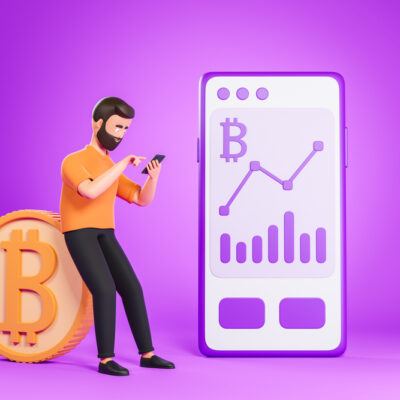
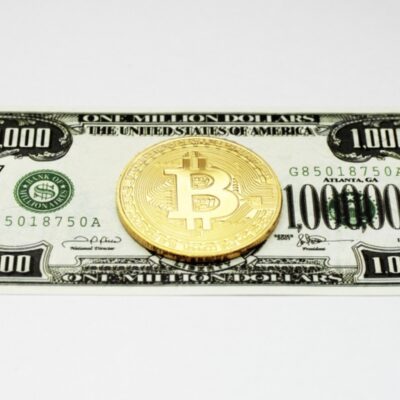


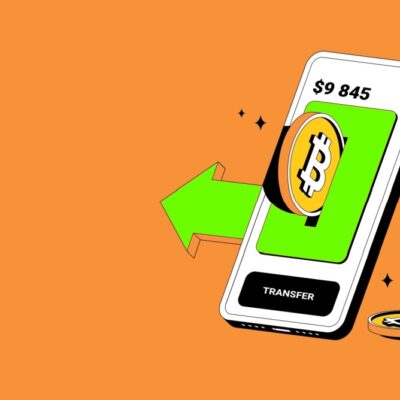
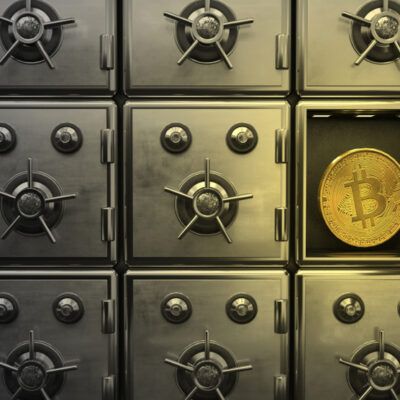

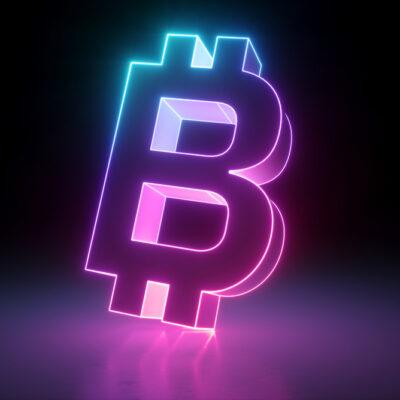
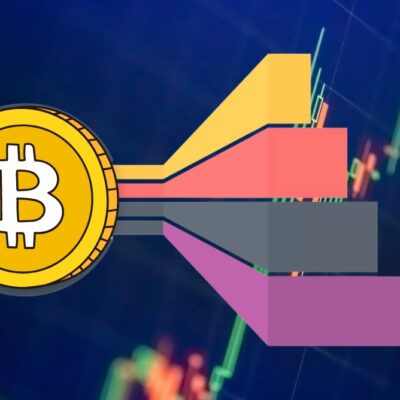



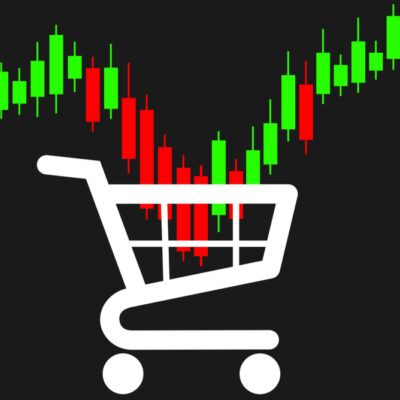
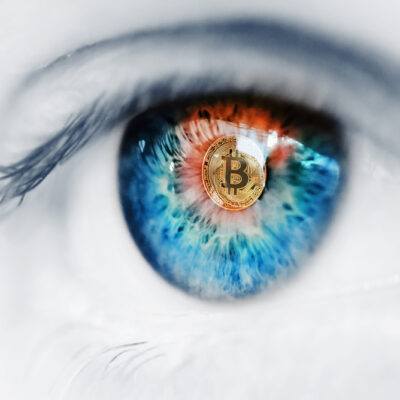



 Can You Buy A House With Bitcoin?
Can You Buy A House With Bitcoin?
Leave a Reply